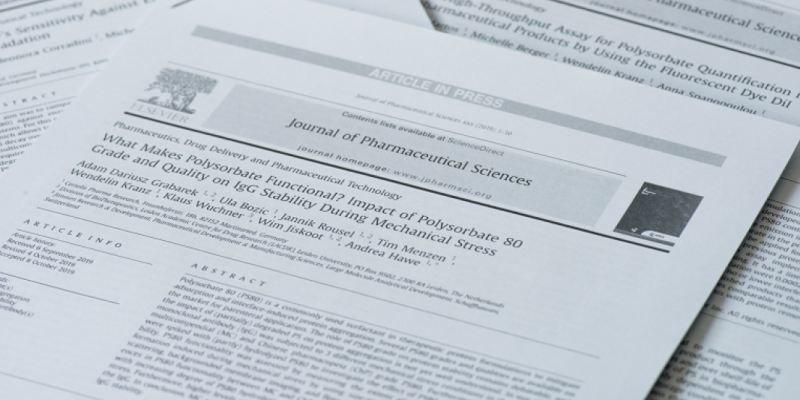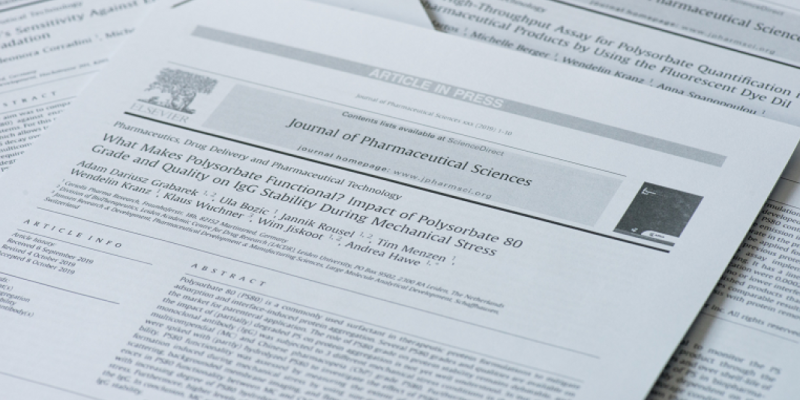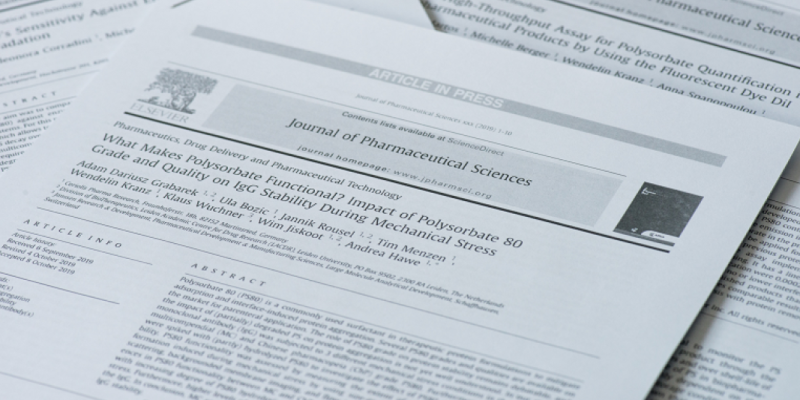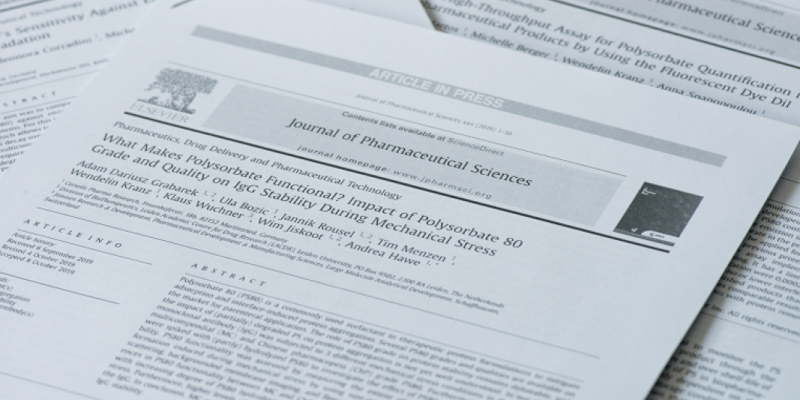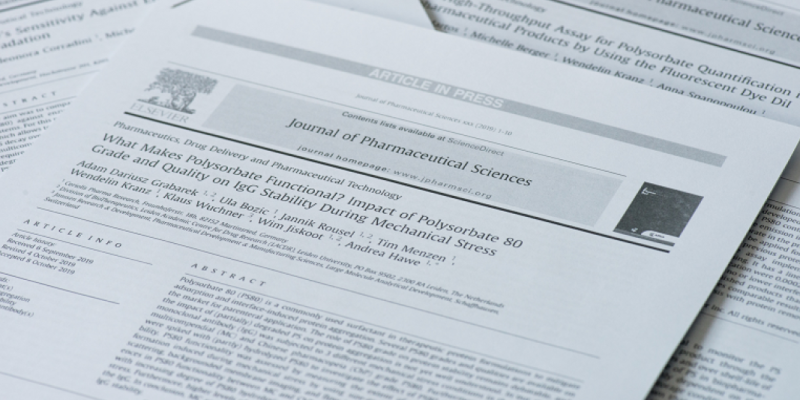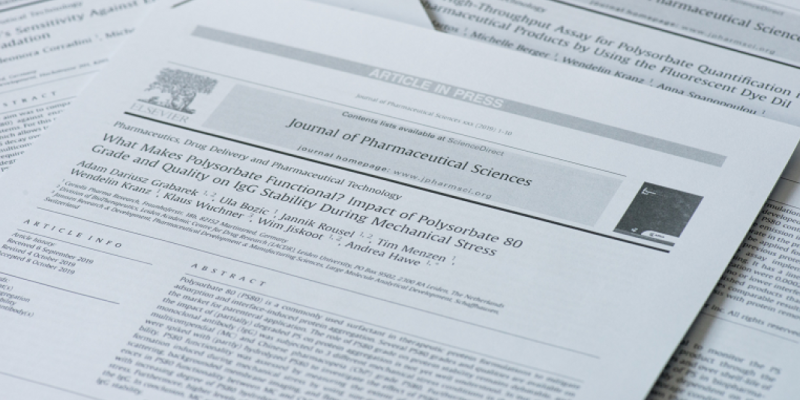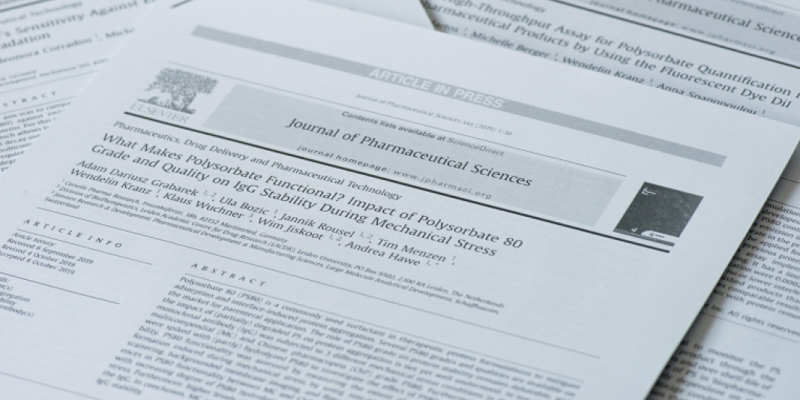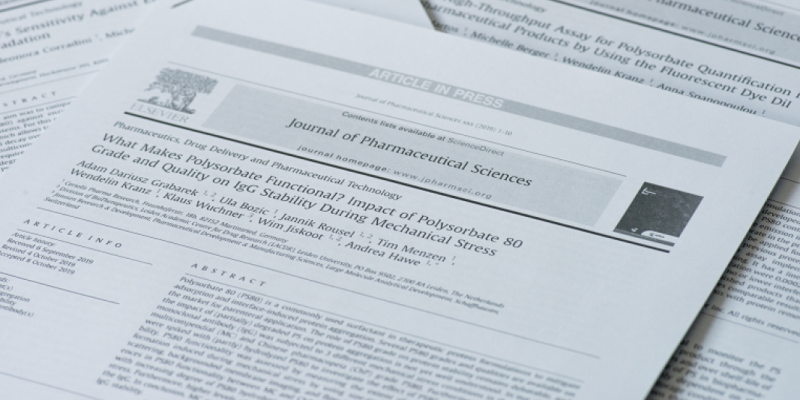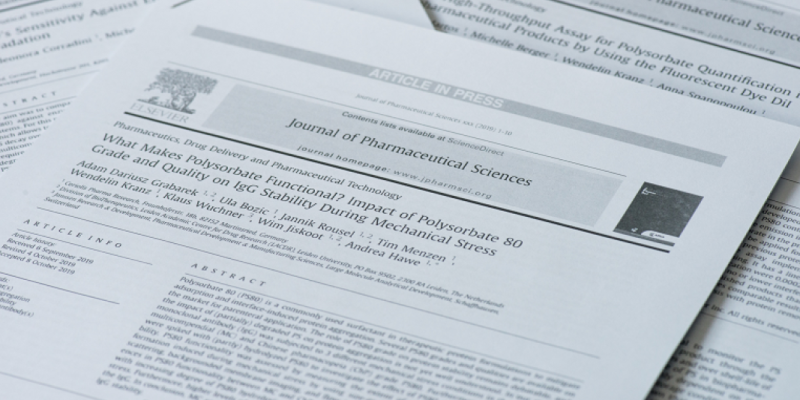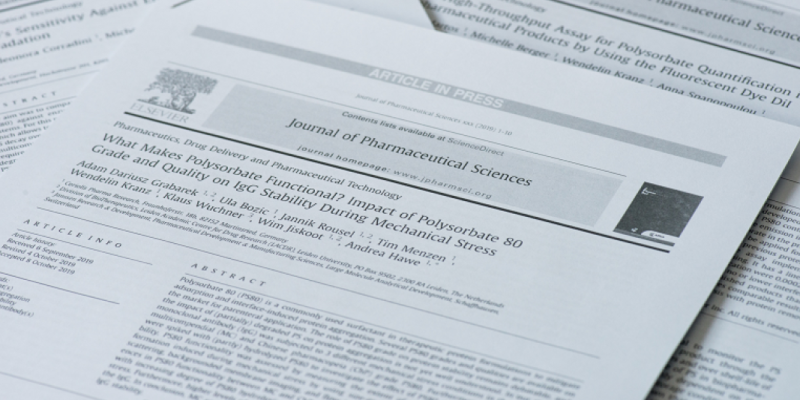Hyaluronan-based dissolving microneedles with high antigen content for intradermal vaccination
Eur J Pharm Biopharm. 2019 JAN
Hyaluronan-based dissolving microneedles with high antigen content for intradermal vaccination: formulation, physicochemical characterization and immunogenicity assessment.
The purpose of this study was to optimize the manufacturing of dissolving microneedles (dMNs) and to increase the antigen loading in dMNs to investigate the effect on their physicochemical properties. To achieve this, a novel single-array wells polydimethylsiloxane mold was designed, minimizing antigen wastage during fabrication and achieving homogeneous antigen distribution among the dMN arrays. Using this mold, hyaluronan (HA)-based dMNs were fabricated and tested for maximal ovalbumin (OVA) content. dMNs could be fabricated with an OVA:HA ratio as high as 1:1 (w/w), without compromising their properties such as shape and penetration into the ex vivo human skin, even after storage at high humidity and temperature. High antigen loading did not induce protein aggregation during dMN fabrication as demonstrated by complementary analytical methods. However, the dissolution rate in ex vivo human skin decreased with increasing antigen loading. About 2.7 µg OVA could be delivered in mice by using a single array with an OVA:HA ratio of 1:3 (w/w). Intradermal vaccination with dMNs induced an immune response similar as subcutaneous injection and faster than after hollow microneedle injection. In conclusion, results suggest that (i) the polydimethylsiloxane mold design has an impact on the manufacturing of dMNs, (ii) the increase in antigen loading in dMNs affects the microneedle dissolution and (iii) dMNs are a valid alternative for vaccine administration over conventional injection.
Eur J Pharm Biopharm. 2019 JAN
https://www.sciencedirect.com/science/article/pii/S0939641118311937?via%3Dihub=

